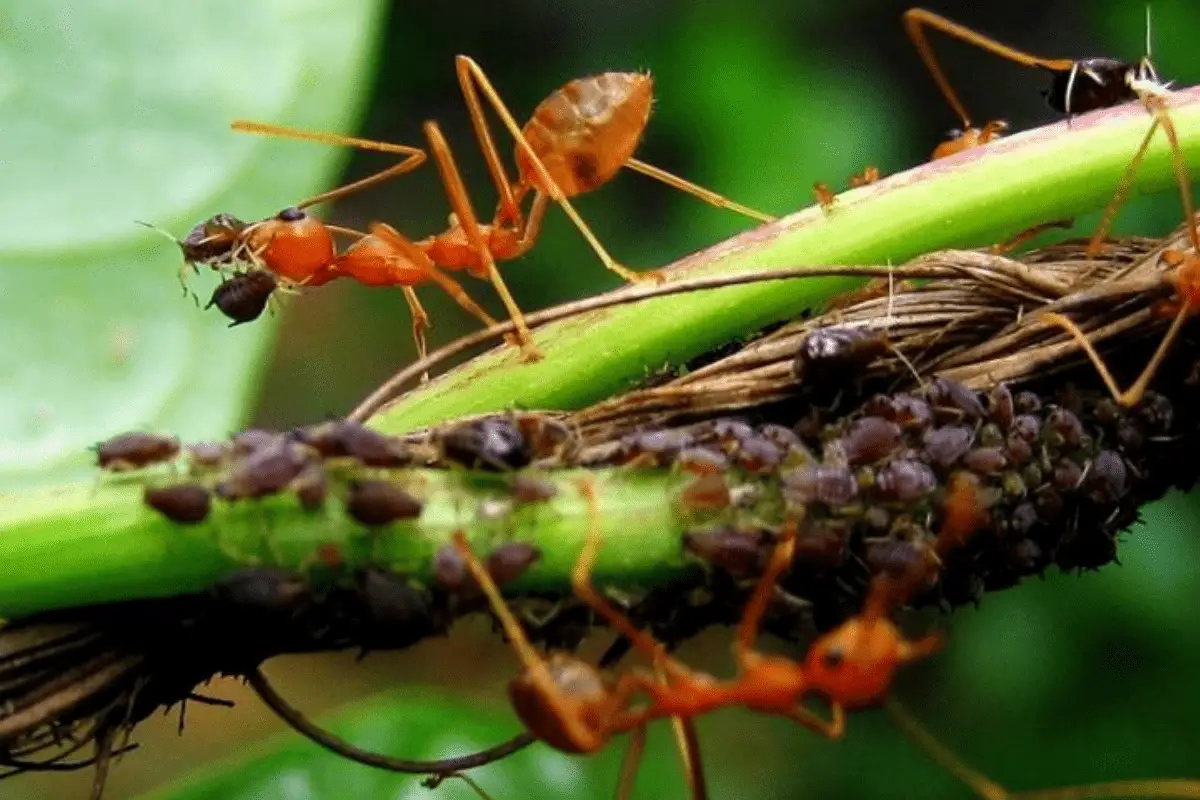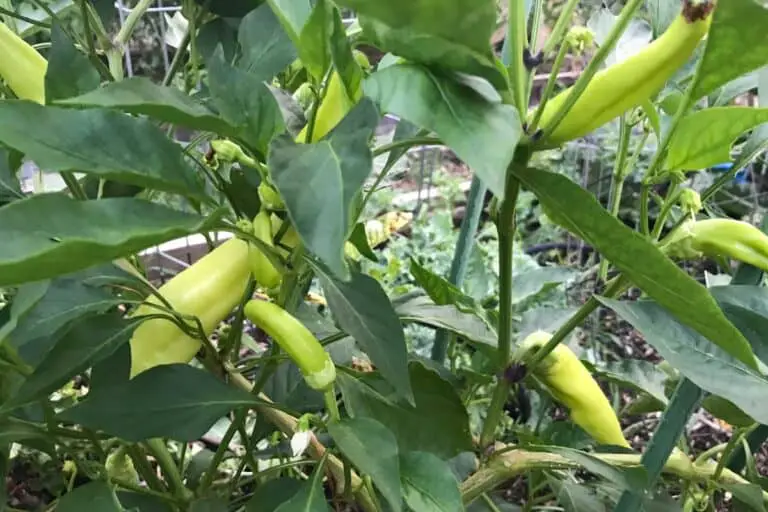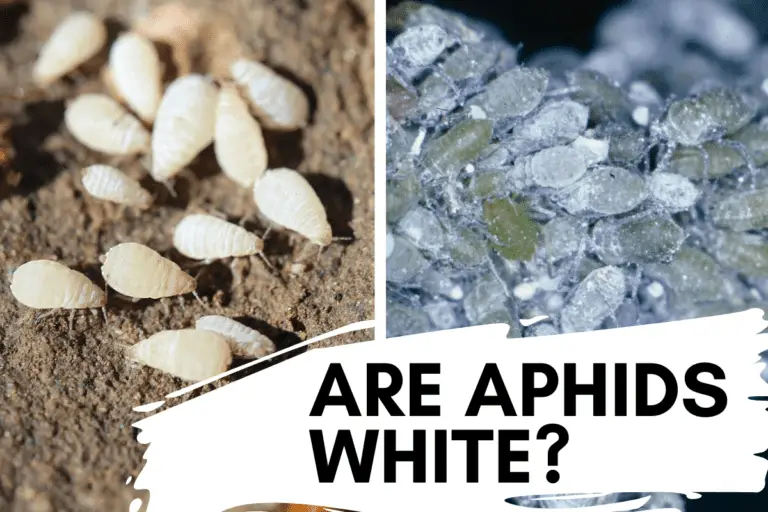Do Ants Eat or Kill Aphids? 6 Environmental Factors
If you’ve noticed aphids in your garden, chances are you might have come across ants as well. These species have developed a mutualistic relationship that often provides benefits to both, a fact written about extensively by gardeners and scientists alike.
But does this mutualism ever break down? In other words, do ants ever eat or kill aphids?
Generally speaking, ants protect and nurture aphids since the latter produce honeydew, a carbohydrate-rich, sugary liquid that ants crave. However, ants have also prey on aphids for numerous reasons, including food scarcity, honeydew preferences, population maintenance, and plant health.
What I find interesting is that the topic of ant-on-aphid predation is rarely discussed by writers and bloggers alike, possibly because ants typically care for aphids, not kill them.
But as numerous studies show–and what I’ll discuss in more detail below–ants are more than willing to prey on aphids if they think it’s in their best interest and if environmental factors push them to do so.
1. Food Scarcity
Adult ants need sugar for survival, such as that found in honeydew droplets, which is one reason why they cultivate and protect aphid colonies.
But queen ants and ant larvae require a protein-based diet instead. The queen needs both proteins and carbohydrates in order to produce eggs, and larvae need proteins because they can’t survive on sugary liquids. This is why worker ants chop up insect prey before feeding the developing larvae.
If available proteins are in short supply–and if ant larvae will suffer because of it–ants will selectively prey on aphid colonies in order to provide the proteins necessary to ensure that their larvae survive.
They’re especially prone to preying on aphids that haven’t already been tended by other ants or members of aphid species who produce less-than-desirable kinds of honeydew. For obvious reasons, ants won’t decimate an aphid colony, but they will pick off what they need to feed their young if circumstances call for it.
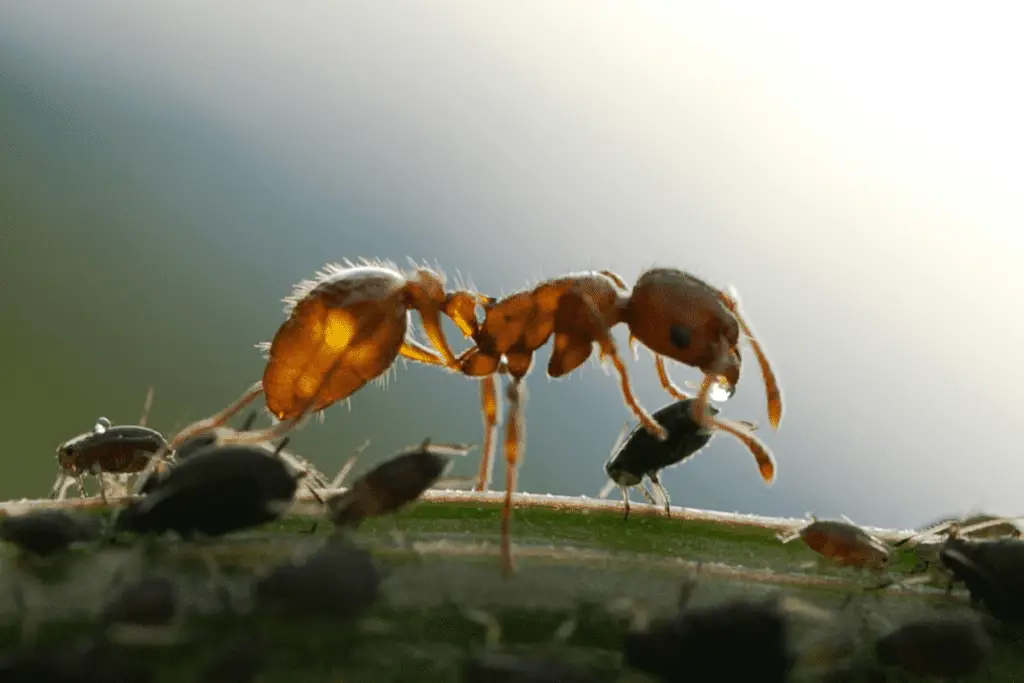
2. Honeydew Preferences
As research has shown, all honeydew is not created equal. In fact, ants have demonstrated that they’re willing to ignore some aphids in favor of others who produce their preferred form of honeydew.
In one particularly fascinating study, researchers watched what ants would do when they encountered 1) multiple aphid species on different plants and 2) multiple aphid species intermixed on the same plant.
In the first instance, the ants attended the less-preferred species, but they only did so until a preferred species showed up nearby. They then ditched the less-preferred species for the more desirable species, allowing the less-preferred species to be preyed on by aphid predators.
In the second instance, ants discovered two aphid species intermixed on the same plant. They nurtured the preferred species, allowing its population to grow, while preying on and thus decreasing the population of the less-preferred species.
What this reveals is that ants don’t uniformly or universally protect aphids, as I’ve seen some garden bloggers suggest. They instead have preferences for certain kinds of aphids and, when possible, will prey upon aphids that aren’t members of their preferred species.
3. Population Maintenance
Similar to what I’ve noted above, research has shown that ants will sometimes work to maintain certain population ratios among their aphid herds.
In one study, researchers watched what would happen when ants came into contact with both shiny birch aphids and black bean aphids. For reasons that are still unknown, the ants did nothing to inhibit population growth among black bean aphids, but they removed and killed off enough shiny birch aphids to ensure that those aphids never numbered more than 50-70 per birch sapling.
In another study, researchers paid close attention to the behavior of ants when they interacted with a single aphid species (mugwort aphids) that had two distinct color variations intermixed, a green variety of mugwort aphid alongside a red variety of mugwort aphid.
Aphids are known for polymorphism–the co-existence of two different-colored forms (called morphs) within the same species–so the researchers were interested to see what ants would do in the presence of 1 species but 2 different-colored morphs.
And here’s where things get interesting. Ants had a distinct color preference for the green aphid morph over the red aphid morph. But unlike the study above, the ants didn’t allow the red morphs to die off. They instead selectively preyed upon the red morphs in order to maintain an overall aphid population that was roughly 65% green morphs and 35% red morphs.
Of course, the aphids were interested in honeydew production, but they were also apparently keeping something else in mind–the health of the plant.

4. Plant Health
What the researchers from the above study hypothesized is that ants knew something rather astounding: The green morphs produced more honeydew than the red morphs, but the red morphs kept the plant from flowering, an event that, as the team at Ars Technica noted, often causes mugwort colonies to die off.
On the one hand, the ants wanted as much honeydew as possible. On the other hand, they also knew that certain aphids suppressed the plant’s natural attempt to divert its energy toward flowering and seed production.
Much like honeybees, who maximize space for honey storage and larval development through the use of hexagons, ants appear to have the capacity to recognize the aphid population ratios that are optimized for both plant and colony endurance. In doing so, they prey upon and kill aphids to maintain their preferred ratios.
5. Lack of Attendance
Another interesting fact about ants is their ability to recognize when aphids have been attended by other ants.
As this study revealed, ants were far more likely to prey upon aphids when aphids hadn’t already been tended to by other ants. In other words, the relationship between an ant and an aphid is such that the interaction leaves behind physical evidence which signals to other ants that certain aphids have demonstrated their value as honeydew producers.
This means that aphids who’ve already produced honeydew droplets for ants are afforded additional protection from ant predation. When looking for proteins for their queen or larvae, the other ants will simply leave previously attended aphids alone in search of unattended ones.
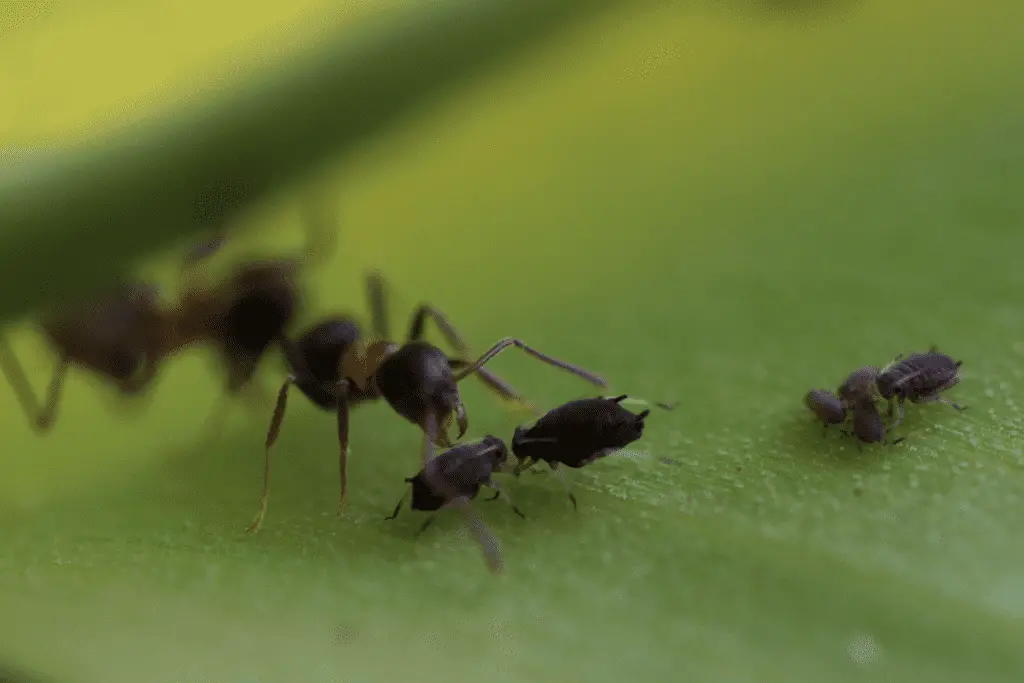
6. Morbidity and Death
When ants prey on aphids, studies show that they often prefer to kill off old or damaged aphids over younger, healthier ones.
This means that ants can instinctively tell which aphids are liable to produce the most honeydew for the longest period of time and thus choose less preferred candidates for predation.
In doing so, they’re simultaneously collecting necessary proteins while also ensuring the overall continuation of the aphid colony through selective symbiosis.
What these studies reveal is that the symbiotic relationship between ants and aphids is incredibly complex. There are many environmental factors that shape this symbiosis–and there’s still a lot we don’t know since, counting both ants and aphids, there are nearly 17,000 species worldwide–but ants clearly prey on, kill, and eat aphids for a variety of reasons even as they simultaneously herd, nurture, and protect them as well.
Can Aphids Survive Without Ants?
Some ants keep aphids safe from predatory bugs. Other ants do the preying themselves. But although aphids are often attended by ants, the vast majority of aphids survive year by year without any ant assistance.
As I’ve noted in articles on where aphids come from, how they spread, and how they survive cold weather and endure freezing winter temperatures, aphids are surprisingly hardy, cold-tolerant species.
They can’t hurt humans or harm our furry friends, but they’ll invade your property, reproduce exponentially and migrate further or lay eggs in your plants that’ll overwinter there until spring arrives.
Although aphids experience high mortality rates each year–even with additional protection provided by ants–they reproduce as such high rates that even a small number of survivors can replenish the population throughout the spring and summer months.
Additional Information
If you’re anything like me, you want to know as much as possible about garden pests so that you understand how they act and how best to get rid of them.
Here are a few related articles in case you’d like to continue learning about these annoying little bugs:
- Are Aphids Safe to Eat? Handling Aphid-Infested Vegetables
- Are Aphids White? How to Spot and Get Rid of White Aphids
- Can Plants Recover from Aphids? Tips to Save Your Plants
- Can You See Aphids on Plants? Spotting Early Infestations
- Does Composting Kill Aphids? 4 Questions to Consider
- Should I Throw Away a Plant with Aphids? Things to Consider
Credit to Vibha Rajl for the photo adapted for this article’s featured image.
